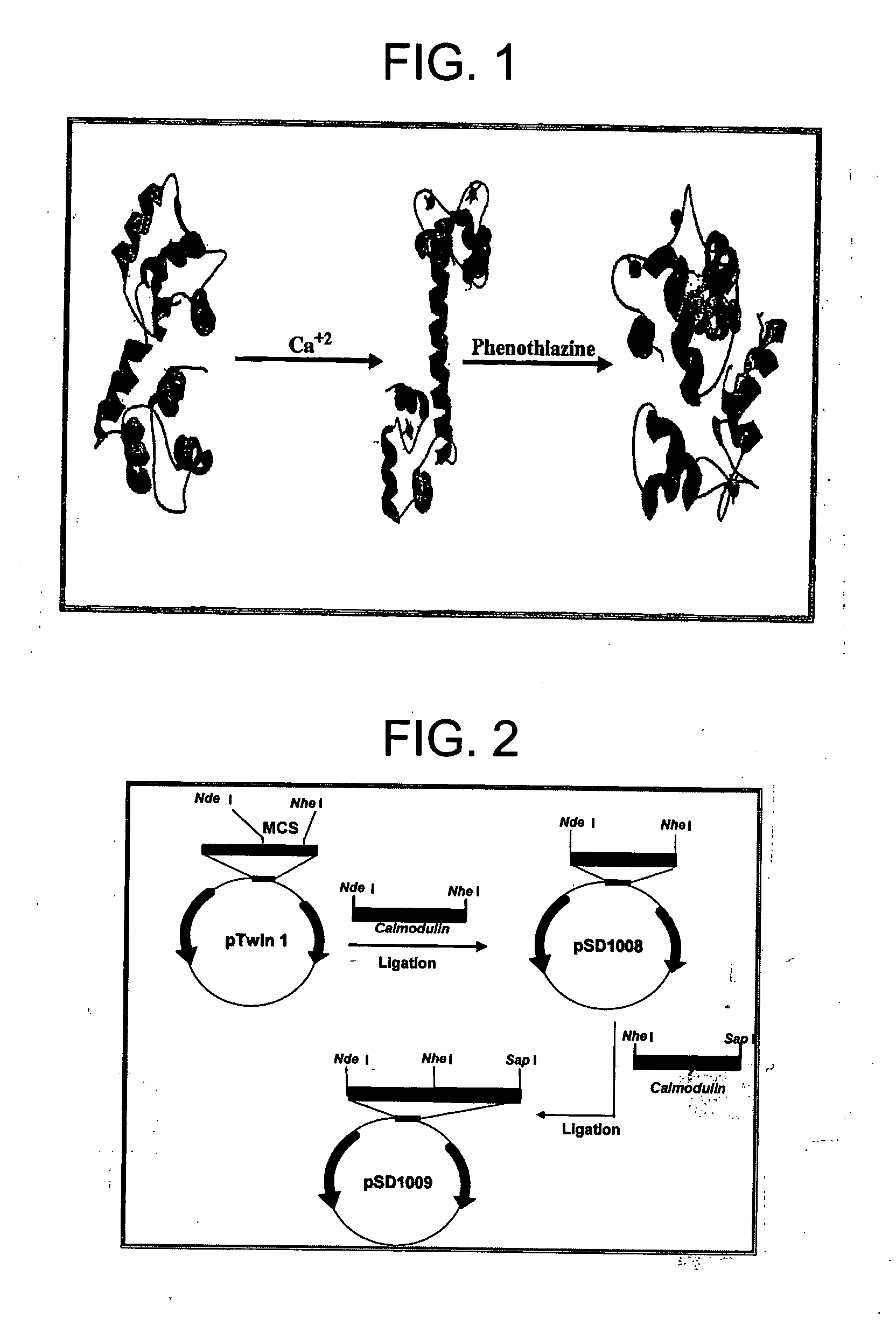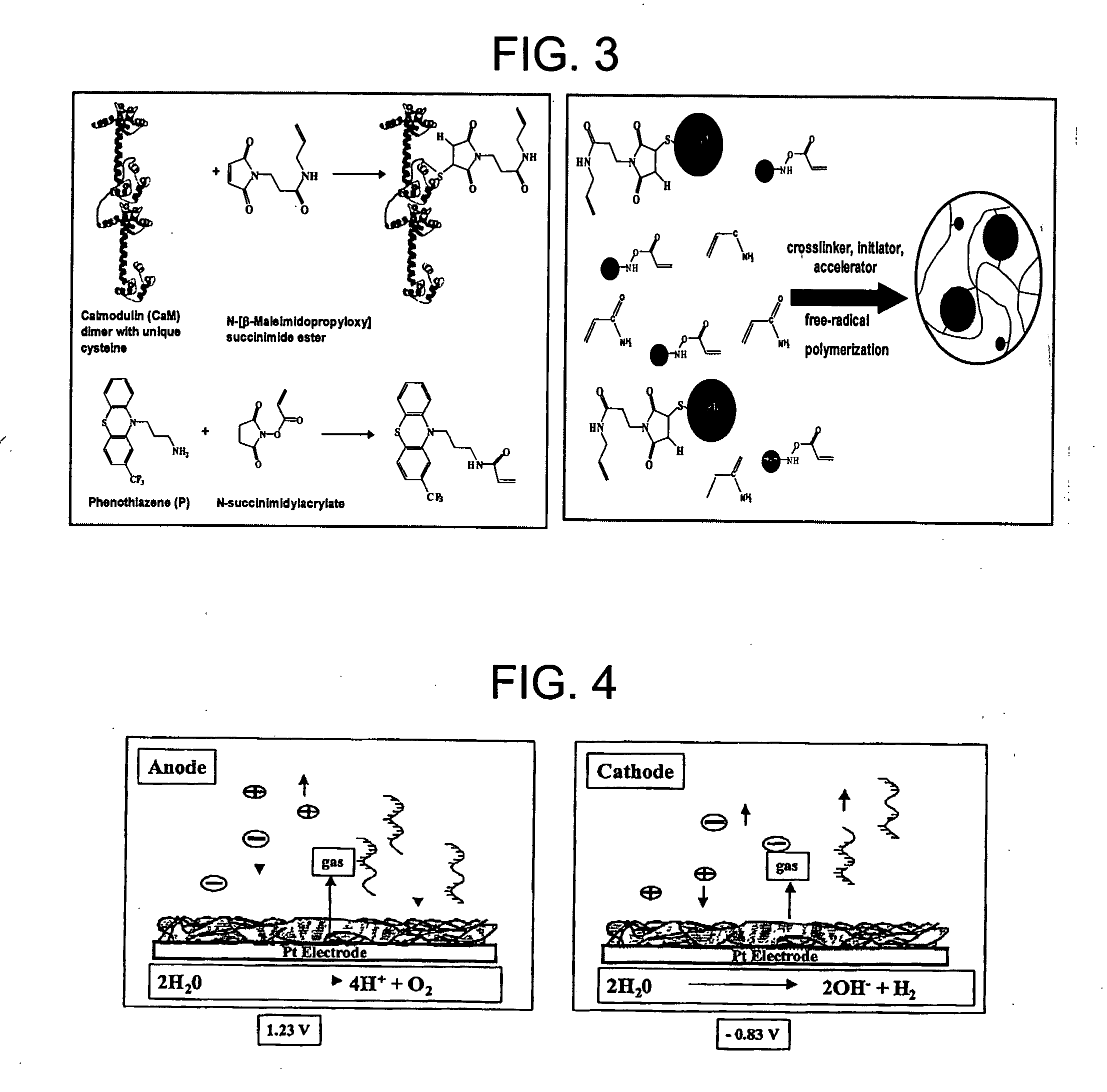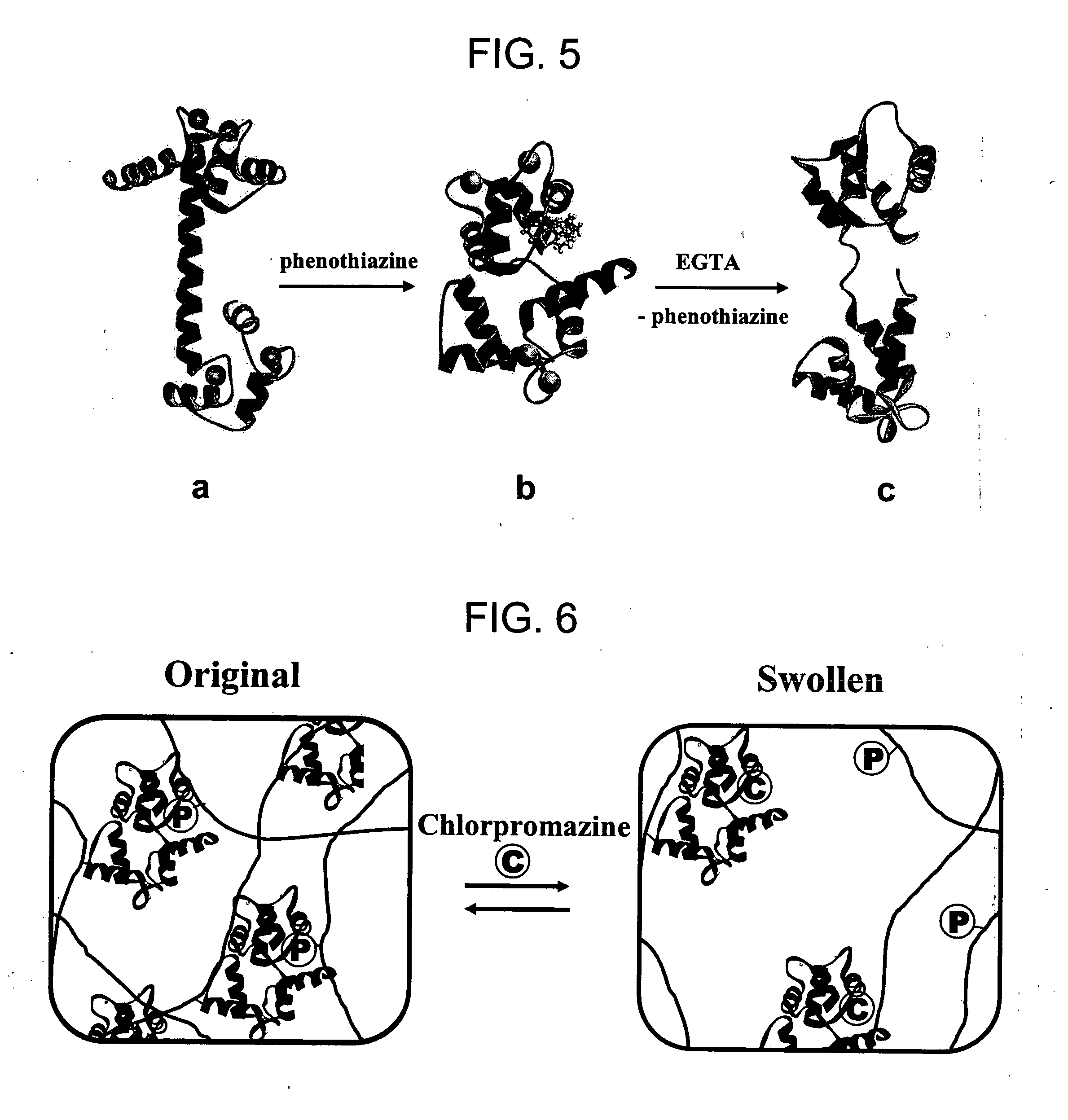Stimuli-responsive hydrogel microdomes integrated with genetically engineered proteins for high-throughput screening of pharmaceuticals
a technology of genetic engineered proteins and hydrogels, applied in the field of stimuli-responsive hydrogels integrated, can solve the problems of ineffective window control of drug release, limited number of biomaterials and limited number of biomaterials that are suitable for biomedical applications. , to achieve the effect of excellent selectivity for ligands
- Summary
- Abstract
- Description
- Claims
- Application Information
AI Technical Summary
Benefits of technology
Problems solved by technology
Method used
Image
Examples
example 1
[0119] The CaM with a unique cysteine at the C-terminus is prepared as follows. The gene for CaM was obtained from the plasmid pVUC-1 using PCR. The CaM gene was modified by site-directed mutagenesis and digested with NdeI and SapI. The digested DNA fragment was ligated into the vector pTWIN-1 to yield the pSD1009 vector. DNA sequencing was performed at the Macromolecular Center (University of Kentucky). Bacteria (E. coli, strain ER 2566) were transformed with the pSD1009 vector. Native CaM with a unique cysteine at the C-terminus was expressed using E. coli and purified by affinity chromatography with chitin beads (New England BioLabs, Beverly, Mass.). Tris-(2-cyanoethyl) phosphine was stirred with the purified CaM before reaction with the BMPS-allylamine to ensure a free sulfhydro group on cysteine.
[0120] Tris-(2-cyanoethyl) phosphine was stirred with the purified CaM before a linker containing a vinyl group was attached to the free sulfhydryl residue o...
example 2
Synthesis of CaM-Phenothiazine Hydrogel and Hydrogel Arrays
[0121] Protein-integrated hydrogels were synthesized by free-radical polymerization of the modified CaM, vinyl-containing 3-(trifluorometyl-phenothiazin-10-yl) propyamine (TAPP), acrylamide (AAm), and N,N′-methylenebis(acrylamide) (MBAA). TAPP and CaM were preincubated before polymerization, and as a result, immobilized TAPP is non-covalently bound to CaM creating additional crosslinking within the hydrogel network. Modified CaM (3 nmol), vinyl-containing TAPP (3 nmol), acrylamide (AAM) (0.014 mol), N,N′-methylenebis-(acrylamide) (MBAA) (6.5 μmol, 1% w / w AAm), 20 μL potassium persulfate (KPS) (0.1 M), and 40 μL N,N,N′,N′-tertramethylethylenediamine (TEMED) (0.4 M) were mixed in 1 mL 10 mM HEPES buffer containing 10 mM CaCl2.
[0122] The stimuli-responsive hydrogel microdomes can be reproducibly synthesized using a “microspotting” technique. This technique comprises pipetting 1 μL one or more droplets of a mixture of CaM, TAP...
example 3
Making of a Calmodulin Dimer Protein
[0124] CaM is a calcium-binding protein that also binds phenothiazines. When CaM binds calcium, it undergoes a conformational change. This conformational change allows CaM to interact with CaM binding proteins, peptides, and drugs such as trifluoropiperazine and phenothiazine. Such a conformational change will be larger when single CaM molecules are linked or fused together to yield a polymeric CaM molecule comprised of at least two single CaM molecules. This example describes preparation of a CaM dimer, a single molecule comprised of two single CaM molecules.
[0125] A CaM dimer protein is made by fusing two CaM-encoding genes together, end-to-end. Such gene fusion techniques are well known to those experienced in the art. The CaM dimer fusion gene is then cloned into a plasmid that will allow expression of the gene in bacteria. The plasmid is used to transform E. coli and bacterial colonies that contain the plasmid are selected. The transformed ...
PUM
| Property | Measurement | Unit |
|---|---|---|
| temperatures | aaaaa | aaaaa |
| volume | aaaaa | aaaaa |
| thick | aaaaa | aaaaa |
Abstract
Description
Claims
Application Information
 Login to View More
Login to View More - R&D
- Intellectual Property
- Life Sciences
- Materials
- Tech Scout
- Unparalleled Data Quality
- Higher Quality Content
- 60% Fewer Hallucinations
Browse by: Latest US Patents, China's latest patents, Technical Efficacy Thesaurus, Application Domain, Technology Topic, Popular Technical Reports.
© 2025 PatSnap. All rights reserved.Legal|Privacy policy|Modern Slavery Act Transparency Statement|Sitemap|About US| Contact US: help@patsnap.com



